What is an AI Robot? Definition, History, and Applications
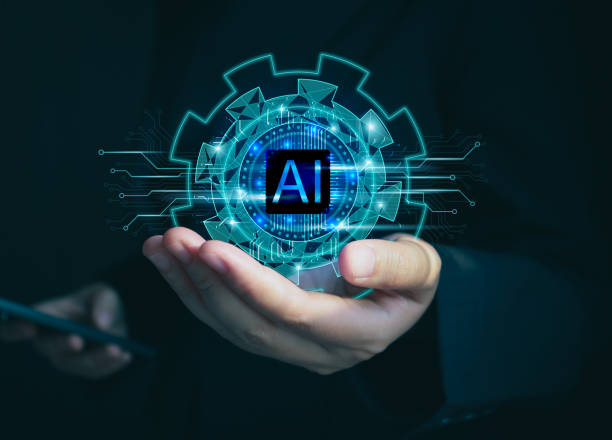
#AI_robots are a combination of two important fields: #robotics and #artificial_intelligence.
Generally, an AI robot refers to a robot that, using artificial intelligence algorithms, is capable of performing tasks that require understanding, reasoning, learning, and decision-making.
These robots go beyond merely executing programmed commands; they can interact with their surroundings, analyze information, and react appropriately based on it.
The history of AI robots dates back decades, but recent advancements in machine learning and natural language processing have enabled the creation of more complex and efficient robots.
Today, AI robots are used in various fields including industry, medicine, education, customer services, and even entertainment.
For example, in industry, smart robots can perform repetitive and dangerous tasks, while in medicine, they can assist surgeons with complex operations.
An AI robot is essentially a software or mechanical entity that, using artificial intelligence algorithms, is capable of mimicking intelligent human behaviors.
These robots can learn, solve problems, and make decisions.
One of the most important features of an AI robot is its ability to learn and adapt to its environment.
For instance, an AI robot designed for customer service can provide more accurate and helpful responses by learning from previous customer interactions.
In summary, an AI robot represents the integration of artificial intelligence into robotic systems, aiming to create machines capable of understanding and interacting with their surroundings in an intelligent and autonomous manner.
Do visitors leave your e-commerce site before buying? Don’t worry anymore! With Rasaweb’s professional e-commerce website design services, solve the problem of visitors not converting into customers forever!
✅ Significant increase in conversion rates and sales
✅ Unique and attractive user experience
⚡ Contact us now for a free consultation!
Main Components of an AI Robot: Sensors, Processors, and Actuators
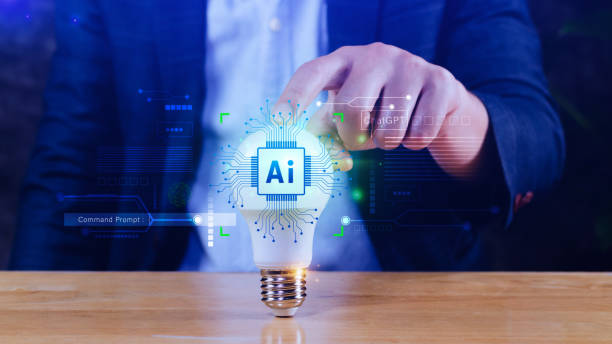
An AI robot consists of three main components: sensors, processors, and actuators.
Sensors are responsible for collecting information from the surrounding environment.
This information can include images, sounds, temperature, pressure, and other sensory data.
Processors are the robot’s brain, responsible for analyzing the information collected by sensors and making decisions.
Processors typically use AI algorithms such as neural networks and machine learning to perform these tasks.
Actuators are responsible for performing physical actions in the real world.
These actions can include movement, grasping objects, speaking, and other physical activities.
The combination of these three components allows an AI robot to interact with its environment, process information, and perform appropriate actions.
For example, an AI robot designed for autonomous driving uses sensors such as cameras and lidar to collect information about its surroundings.
Then, the processor analyzes this information using AI algorithms and decides how to control the steering, brakes, and accelerator.
Finally, the actuators execute these decisions and automatically steer the vehicle.
These components, along with AI algorithms, form the beating heart of every smart robot and determine how the robot perceives and interacts with its surrounding world.
Key Algorithms in Smart Robots: Machine Learning, Neural Networks, and Natural Language Processing
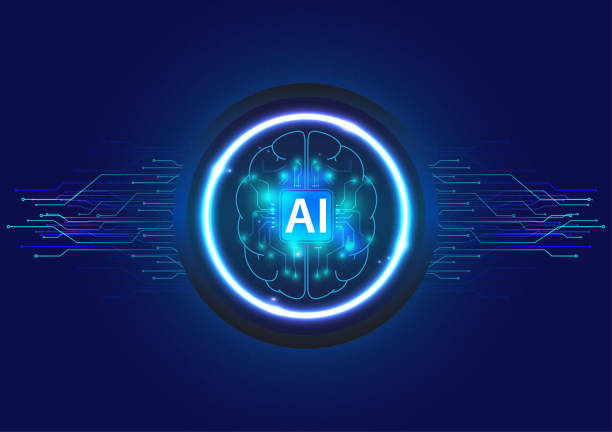
AI algorithms play a very important role in the performance of AI robots.
Among the most important of these algorithms are machine learning, neural networks, and natural language processing.
Machine learning allows robots to learn from data and improve their performance without explicit programming.
Neural networks are computational models inspired by the structure of the human brain, used to solve complex problems such as pattern recognition and classification.
Natural language processing enables robots to understand and generate human language and communicate naturally with humans.
For example, an AI robot designed for customer service can understand customer requests and provide appropriate responses using natural language processing.
AI robots used in industry often leverage machine learning to optimize processes and increase productivity.
These algorithms enable AI robots to make intelligent decisions, perform complex tasks, and continuously learn and improve.
| Algorithm | Application |
|---|---|
| Machine Learning | Process optimization, prediction |
| Neural Networks | Pattern recognition, classification |
| Natural Language Processing | Understanding and generating human language |
Applications of AI Robots in Various Industries: From Manufacturing to Services
![]()
AI robots have widespread applications in various industries.
In the manufacturing industry, smart robots can perform repetitive and dangerous tasks with high precision and speed, leading to increased productivity and reduced costs.
In the service sector, AI robots can act as virtual assistants, consultants, and guides, helping customers resolve issues and find information.
In the medical field, surgical robots can perform complex operations with greater precision, and nursing robots can assist patients with daily tasks.
In education, smart robots can act as private tutors, helping students learn new concepts.
Even in agriculture, AI robots help optimize production by detecting pests and diseases and performing targeted spraying.
These applications are just a few examples of the high potential of AI robots in improving quality of life and increasing productivity across various industries.
AI robots are capable of identifying patterns and making more optimal decisions using collected data, which leads to increased efficiency and reduced human errors.
Are you tired of your e-commerce site having visitors but no sales? Rasaweb, with its professional e-commerce website designs, solves your main problem!
✅ Significant sales increase with targeted design
✅ Flawless user experience for your customers
⚡ Get a free consultation!
Challenges and Limitations of Smart Robots: Cost, Security, and Ethical Issues

Despite the high potential of AI robots, there are also challenges and limitations in the development and use of this technology.
One of the most important challenges is the high cost of designing, building, and maintaining smart robots.
Another challenge is the security issues related to AI robots.
Hackers can access robot control systems and program them to perform malicious actions.
Furthermore, there are ethical issues related to the use of AI robots.
For instance, using smart robots in warfare can lead to increased violence and casualties.
Also, the use of smart robots in jobs can lead to the loss of human jobs.
It is important to note that designing AI robots with adherence to ethical and security issues is crucial to prevent misuse of this technology.
Ethical issues, including accountability for robot decisions and protecting individual privacy, require careful consideration and the establishment of appropriate laws and regulations.
These challenges and limitations indicate that the development and use of AI robots require a responsible and forward-thinking approach to harness the benefits of this technology and prevent its potential risks.
Future of AI Robots: Predictions and Emerging Trends

The future of AI robots is very bright and full of potential.
It is predicted that in the coming years, smart robots will play a much more significant role in our lives.
With recent advancements in deep learning and natural language processing, smart robots will be able to perform more complex tasks and interact more naturally with humans.
One of the emerging trends in AI robots is the development of collaborative robots.
These robots are designed to work alongside humans and can assist them with tasks.
Another trend is the development of self-learning robots.
These robots can learn from their surroundings and improve their performance without explicit programming.
Furthermore, AI robots are expected to find applications in new areas such as healthcare, education, and entertainment.
For instance, smart robots can act as personal caregivers, assist students with learning, or serve as entertaining companions for the elderly.
Ultimately, the future of AI robots depends on the level of investment in research and development, the formulation of appropriate laws and regulations, and the social acceptance of this technology.
What is the Difference Between AI Robots and Ordinary Robots?
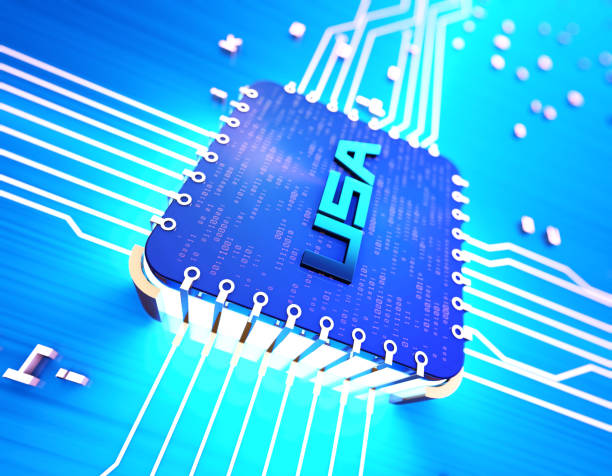
The main difference between AI robots and ordinary robots lies in their level of intelligence and flexibility.
Ordinary robots are usually programmed to perform specific and repetitive tasks and are unable to change their performance in response to new conditions.
In contrast, an AI robot, using artificial intelligence algorithms, is capable of learning, reasoning, and decision-making, and can adjust its performance based on environmental conditions.
#AI_robots are able to identify patterns and make more optimal decisions using information collected from the environment.
For example, an ordinary robot programmed to weld car parts can only perform this task and cannot change its performance if the shape of the parts or the type of weld changes.
In contrast, an AI robot designed for welding can learn optimal welding patterns using machine learning and automatically adjust its performance if the shape of the parts or the type of weld changes.
Due to their intelligent capabilities, AI robots are capable of performing more complex and diverse tasks compared to ordinary robots.
| Feature | Ordinary Robot | AI Robot |
|---|---|---|
| Intelligence | Limited | High |
| Flexibility | Low | High |
| Learning | No | Yes |
| Decision-making | No | Yes |
How to Train an AI Robot: Data Collection, Algorithm Selection, and Performance Evaluation
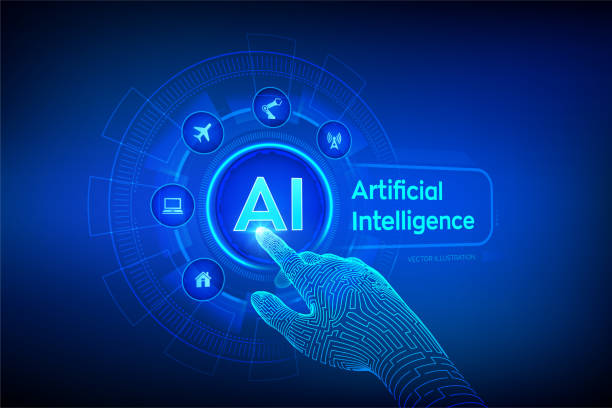
Training an AI robot is a complex process that involves various stages, including data collection, selecting the appropriate algorithm, and evaluating performance.
In the first stage, sufficient and relevant data for the task the robot needs to perform must be collected.
This data can include images, sounds, texts, and other sensory data.
In the second stage, the appropriate AI algorithm for training the robot must be selected.
Various algorithms exist for training robots, including machine learning, neural networks, and reinforcement learning.
In the third stage, the robot’s performance after training must be evaluated.
This evaluation can include testing the robot in real-world conditions and comparing its performance with human performance.
The AI robot training process is usually an iterative process, and different stages may need to be repeated multiple times until the robot’s performance reaches the desired level.
Collecting high-quality data and selecting the appropriate algorithm are among the key factors in the successful training of AI robots.
AI robots require machine learning and natural language processing.
Does your current website showcase your brand’s credibility as it should? Or does it drive potential customers away?
Rasaweb, with years of experience in professional corporate website design, is your comprehensive solution.
✅ A modern, beautiful website aligned with your brand identity
✅ Significant increase in lead generation and new customers
⚡ Contact Rasaweb now for a free corporate website design consultation!
AI Robots in Daily Life: From Smart Homes to Autonomous Vehicles
![]()
AI robots are increasingly present in our daily lives and have applications in various fields, including smart homes, autonomous vehicles, and virtual assistants.
In smart homes, intelligent robots can automatically perform tasks such as controlling lighting, temperature, and security.
In autonomous vehicles, AI robots are responsible for driving and can safely and efficiently navigate the vehicle.
Virtual assistants like Siri and Alexa also use AI algorithms to understand and respond to user questions and commands.
AI robots are expanding into various fields.
Furthermore, AI robots also have applications in other fields such as medicine, education, and entertainment.
For instance, surgical robots can perform complex operations with greater precision, teacher robots can assist students with learning, and entertaining robots can serve as fun companions for children and the elderly.
With further advancements in artificial intelligence, AI robots are expected to play a more significant role in our daily lives and contribute to improving our quality of life.
Important Tips for Choosing and Buying a Smart Robot: Assessing Needs and Comparing Models

Choosing and buying a smart robot can be an important decision, especially if you intend to use it for specific tasks.
Before purchasing a smart robot, you should carefully assess your needs.
What tasks do you want the robot to perform? What features are important to you? After assessing your needs, you should compare different models of smart robots available in the market.
Price, features, performance, and user reviews are among the factors to consider when comparing models.
Also, you should note that AI robots are constantly being developed, and new models with better features are regularly introduced to the market.
Before purchasing, ensure that your chosen robot has adequate technical support, and that you can get help from specialists if a problem arises.
Careful assessment of needs, comparison of models, and attention to technical support are among the important tips for choosing and buying a smart robot.
By considering these tips, you can choose a smart robot that best meets your needs and helps improve your quality of life.
Frequently Asked Questions
| Question | Answer |
|---|---|
| What is an AI robot? | It is a robot that uses artificial intelligence capabilities for environmental perception, reasoning, learning, and decision-making to perform complex tasks autonomously. |
| What is the main difference between an ordinary robot and an AI robot? | AI robots can learn and adapt to their environment, while ordinary robots typically operate based on fixed and predetermined programming. |
| In what fields are AI robots used? | In fields such as industry (production lines), medicine (robotic surgery), services (customer support, smart vacuum cleaners), exploration (space and underwater), and entertainment. |
| How do AI robots learn? | They acquire new skills by analyzing large data and identifying patterns through Machine Learning and Deep Learning algorithms. |
| Can AI robots have emotions? | Currently, no. They can identify or simulate emotions, but they do not genuinely experience emotions like humans. |
| What are the most important advantages of using AI robots? | Increased productivity, reduced human error, performance of dangerous or repetitive tasks, and provision of innovative and efficient services. |
| What challenges exist in the development of AI robots? | The need for abundant and high-quality data, complexity of algorithms, ethical issues, cybersecurity, and high research and development costs. |
| Are AI robots dangerous for humans? | With adherence to safe design principles and ethical regulations, no. Concerns are mostly related to social and economic impacts, such as changes in the job market. |
| What is an example of an AI robot in daily life? | Smart vacuum cleaner robots (like Roomba) that automatically map and clean the house, or smart voice assistants (like Siri and Alexa). |
| How is the future of AI robots predicted? | They are expected to become smarter, more autonomous, and capable of more complex interactions with humans, playing a more prominent role in industry, medicine, transportation, and daily life. |
And other services by Rasaweb Advertising Agency in the field of advertising
- Smart Website Development: A dedicated service for growth and increasing click-through rates based on real data.
- Smart Custom Software: Designed for businesses looking to analyze customer behavior through optimizing key pages.
- Smart Marketplace: Revolutionize customer behavior analysis with marketing automation.
- Smart Advertorial: A professional solution for customer behavior analysis with a focus on intelligent data analysis.
- Smart Website Development: An innovative platform for improving sales increase with custom programming.
And over a hundred other services in the fields of internet advertising, advertising consultation, and organizational solutions
Internet Advertising | Advertising Strategy | Advertorial
Resources
Comprehensive Guide to AI Robots on Zoomit
How Do AI Robots Work? – Digikala Magazine
Smart Robots Are Changing the Future – ISNA
Introduction to Smart Robots – Tavanir
? With Rasaweb Afarin, build the future of your business in the digital world. By providing innovative digital marketing solutions, from personal website design and corporate websites to SEO and targeted advertising, we help you keep your brand at its peak. With us, have a powerful and impactful presence online.
📍 Tehran, Mirdamad Street, next to Bank Markazi, Southern Kazeroun Alley, Ramin Alley, No. 6


